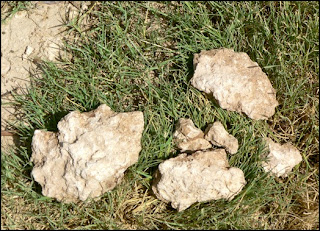1 cup of Bio-Bubble
1 cup untreated rain water
2 cups organic wholemeal bread flour
40-50 grams pure honey
1 small dash of unrefined sea salt
At sunrise add the following to make a dough, knead and incubate all day until sundown.
1 heaped teaspoon unrefined sea salt
1 tablespoon extra virgin cold pressed olive oil
2 heaped teaspoons organic flax seed
1 heaped tablespoon organic poppy seed
1 heaped tablespoon organic caraway seed (optional)
1 heaped tablespoon organic rosemary, fennel seed of coriander seed (optional)
2 cups wholemeal flour, enough to make a moist dough. Bakers choice of wheat, rye or spelt.
An hour before sundown insert hearth rock or fire bricks in over and preheat for at least an hour to 200C. Knead dough into a round loaf and score, lightly, for expansion. Flour heath and set loaf on hearth to bake for approximately 40-50 minutes, or until center is barely baked. Air cool. This bread should have a crust.
Theory behind 24 hour bread
The purpose of this bread if to bring the flour to life from its inert condition as grain.l This is a simple method that starts with finely ground whole grain flour. It can take place of the more cumbersome method of malting (sprouting, drying and grinding) whole grain to make the dough.
One of the reasons people have trouble digesting bread and develop allergies to protein rich grains such as wheat is that these grains in their inert state contain phytic acid which inhibits uptake of minerals, especially magnesium and zinc.
Enrenfired Pfeiffer's chronmatographic research into breads and bread baking suggests that flours needs to ferment as a dough for 12 to 16 hours for phytic acid to be destroyed and the resulting bread to be digestible.
Bio-Bubble serves to mediate and provide microbial support, much as plant juices - or even the clay in the soil - do. This balance between the digestive processes of lime (CaO) and the ripening processes of silica.
The result is a rich, flavourful bread that surmounts the three chief problems most people have with breads - phtic acid, yeast and undigested gluten. Phytates block absorption of magnesium and zinc. Yeasts exacerbate Candida problems and undigested gluten triggers allergies.
What is Bio-Bubble™?
Bio-Bubble™ is a fizzy, fermented probiotic powerhouse, featuring food-based antioxidants, amino acids, vitamins, enzymes and billions of beneficial microorganisms per serve. |
"This defence food offers probiotic support that is far more potent than many of the task-specific probiotics. This is a fizzy, fermented liquid derived from the microbial digestion of eight organic cereal grains and several legumes including alfalfa and soybeans. Probiotics involve a numbers game where the aim is to overwhelm the 'bad' guys with the 'good' guys and you will see that the benefits can extend far beyond bio-balancing. |
Bio-Bubble link here

































